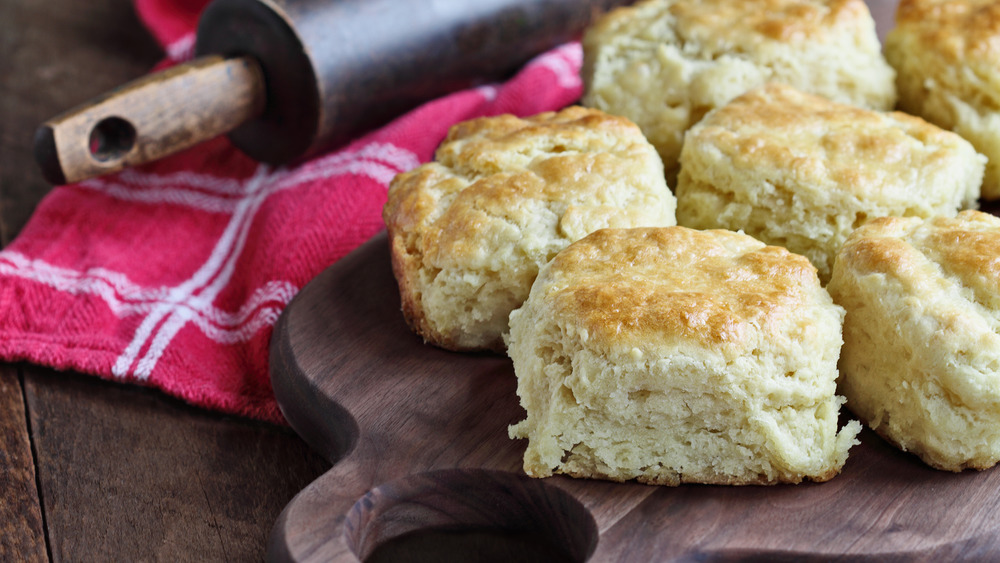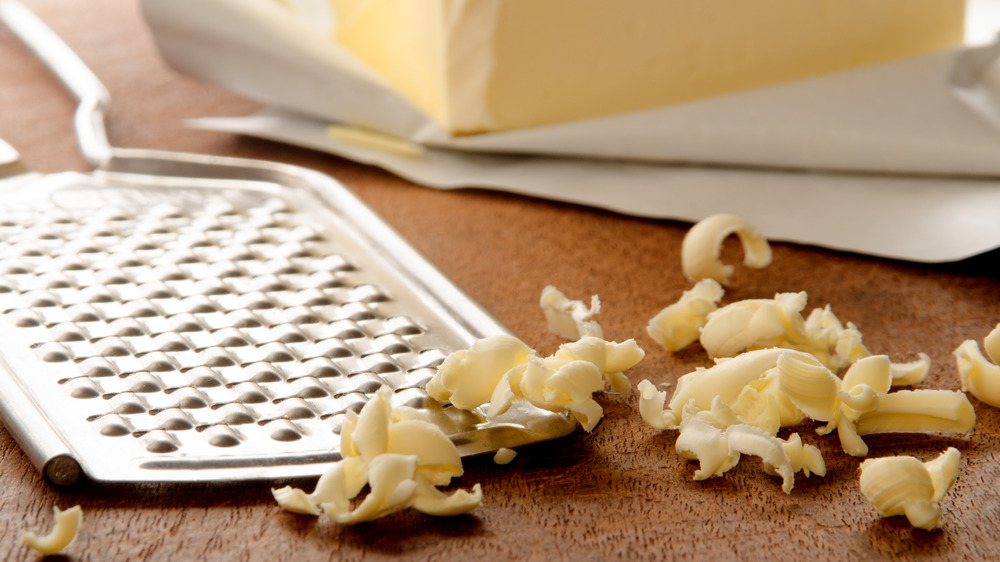This Biscuit Making Hack Changes Everything
Every cook or chef that has ever made a biscuit has a secret for making these flaky quick breads that can defy gravity and melt in the mouth. Famed Southern cooks like Carrie Morey and Callie White of Charleston's Callie's Hot Little Biscuit swear by White Lily flour, the low-protein, low-gluten flour that's milled using soft red winter wheat (via Today). That assertion is backed by retired University of Georgia professor of food science Robert Dixon Phillips, who says soft wheat flours like White Lily "has less gluten protein and the gluten is weaker, which allows the chemical leavening — the baking powder — to generate carbon dioxide and make it rise up in the oven" (via The Atlantic).
But experts say it takes more than White Lily flour to make a biscuit flaky. Recipe developer Chadwick Boyd told NPR: "A home cook is going to have three or four different varieties at the grocery store to choose from. The notion that if you pick one over the other is going to determine the success or failure of your biscuits is just wrong."
Grating butter is the biscuit baking hack you didn't know you needed
Baking experts now say that the temperature of the fat (butter, margarine, or shortening) that you mix into your dough is the key to helping your biscuits reach their full potential. The Kitchn suggests you keep your butter cold, and to handle your dough as little as possible. As an added bonus tip, instead of cutting the butter into little chunks, as bakers used to recommend, freeze your butter the night before until it's solid, and grate it with a box or cheese grater.
Using frozen butter makes sure that the fat stays cold, and because it's already in little pieces, the dough doesn't need to be handled as much as it would be if your butter was in bigger chunks (Food 52 helpfully provides a demonstration which you can watch here). NPR adds that it's important that you see slivers of butter in the dough before your biscuit-to-be makes it into the oven.
The technique works, because science. As the butter melts in the oven, it produces steam, which results in lifting and making flaky layers. The technique is versatile — and works not just with biscuits but with pie crusts too (via The Kitchn). The more you know.

